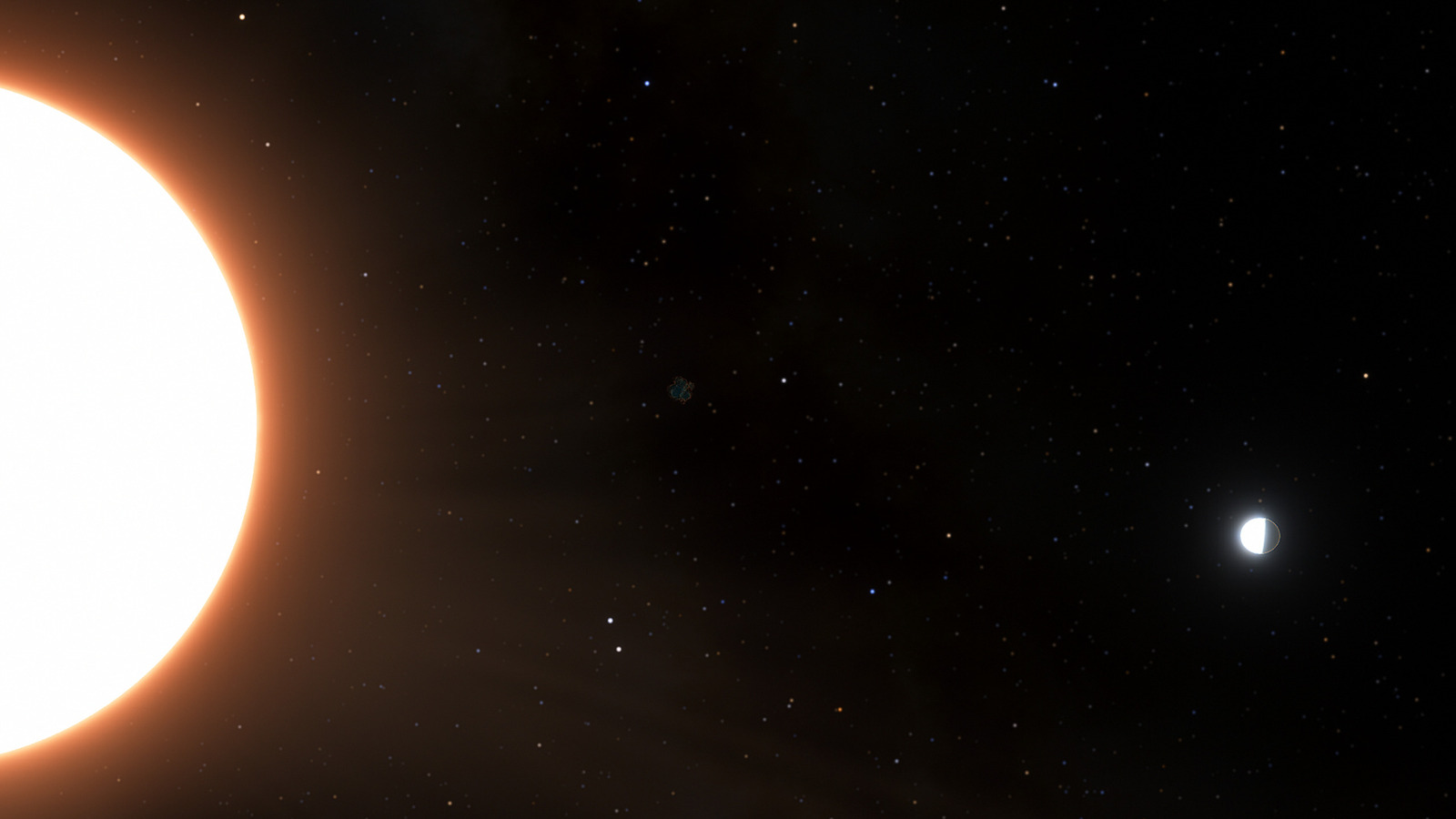
“Imagine a burning world, close to its star, with heavy clouds of metals floating aloft, raining down titanium droplets.” This is how LTT9779b is described by James Jenkins, co-author of the research and an astronomer at Diego Portales University. The exoplanet’s side facing its star has a temperature of around 2,000 degrees Celcius.
But despite such scorching hot conditions, the planet still has cloud formations. “We should think about this cloud formation in the same way as condensation forming in a bathroom after a hot shower,” explains Vivien Parmentier, a co-author of the research paper published in the Astronomy & Astrophysics journal.
But these are no ordinary clouds. Instead, they are made of evaporated silicates and titanium metal. This metallic cloud reflects a huge portion of the light falling on the planet and gives it a mirror-like appearance. It’s also thanks to these heavy clouds of metals and silicates — the material that forms glass and sands — that the host star doesn’t blow away LTT9779b’s atmosphere.
Notably, no other “ultra-hot Neptunes” of this size and weight class have been spotted. Located over 260 lights years away from Earth, LTT9779b is said to be the first exoplanet that is as shiny as Venus and sheds new light on the existence of unique planets thriving in the “Neptune desert” region of their host star.
Stay connected with us on social media platform for instant update click here to join our Twitter, & Facebook
We are now on Telegram. Click here to join our channel (@TechiUpdate) and stay updated with the latest Technology headlines.
For all the latest Gaming News Click Here
